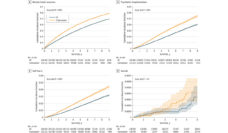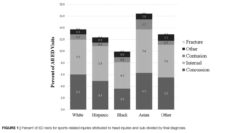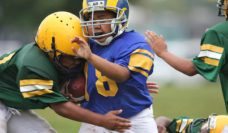The National Hockey League (NHL) is the only major sports league that does not immediately eject players who fight during a game. In fact, hockey coaches have recruited players who have a reputation for fighting and playing a “heavy game” to intimidate opponents and gain momentum for their team. These players are known as enforcers.
The relentless physicality and repeated blows to the head endured by NHL enforcers put them at high risk for developing severe concussions and chronic traumatic encephalopathy (CTE). CTE is a degenerative brain condition caused by repeated head trauma including concussions, which are a common occurrence in hockey. The condition causes the brain to degenerate, resulting in memory loss, impaired judgment, suicidality, and, eventually, progressive dementia.
CTE gained attention for its impact on football players, like former New England Patriots player Aaron Hernandez whose autopsy revealed severe CTE after he died by suicide in prison after a murder conviction. Now, the condition’s impact on hockey players is drawing increasing attention. The premature deaths of multiple NHL players all found to have CTE, including Derek Boogaard (death by drug overdose at age 28), Steve Montador (death by heart attack at age 35) and Rick Rypien (death by suicide at age 27),underscore the urgent need to address the risk of CTE.
Researcher Charles Popkin and colleagues explored whether the age at death and causes of death of NHL enforcers who played between 1967 and 2022 were different from other NHL players. Players were labeled as enforcers if they had at least 50 career fights or averaged three or more penalty minutes per game. For details on player deaths, researchers collected information from local newspapers, national news, and NHL.com.
The study found that enforcers died ten years earlier, on average, than matched NHL players. The enforcers died more often of suicide, drug overdoses, and neurodegenerative disorders (like Alzheimer’s) than did other NHL players. These causes of death are often linked to CTE.
Despite what hockey tradition holds, fighting does not seem to produce its supposed benefits. Fighting does not impact fan attendance and doesn’t help a team’s chance of winning. Although fighting is still allowed in the NHL, teams at all levels, including the NHL, are moving away from using enforcers, and fights per game have dropped from 0.64 in 2002 to 0.18 in 2020.
Fighting and the role of the hockey enforcer are slowly being phased out of the game. But Popkin’s study points to a larger, more worrisome trend of head injuries in professional and amateur hockey and a lack of response by influential NHL leaders.
The most common cause of concussions and brain injuries in hockey is not fighting, but body checking, which is a central part of every game. Body checking occurs when a defensive player crashes into the opponent with the puck. The move is allowed for boys over the age of 12 and is a central part of the game, with dozens of bodychecks occurring every game.
Players fly across the ice chasing a puck and throwing their bodies into their opponents, reaching speeds of up to 35 miles per hour. The result of the high-speed physicality is that between 14% and 30% of hockey players will be concussed in any given season. Repeated concussions and blows to the head mean that every additional year of hockey in a league with body checking is estimated to increase a person’s chance of developing CTE by 23%.
The NHL and its commissioner, Gary Bettman, have repeatedly disputed the link between hockey and CTE, despite compelling evidence to the contrary. The league’s unwillingness to admit that the sport poses a danger to players’ brain health has obstructed the necessary response to CTE’s deadly toll in hockey.
The researchers suggest that the NHL revisit the idea of making fighting a game misconduct penalty, resulting in an automatic ejection from the game. The rule change would be a clear first step to protect players from head injuries and shift the league’s culture to one that acknowledges the risk of CTE and works to diminish it, even as aggressive body checking continues.
Photo via Getty Images.














